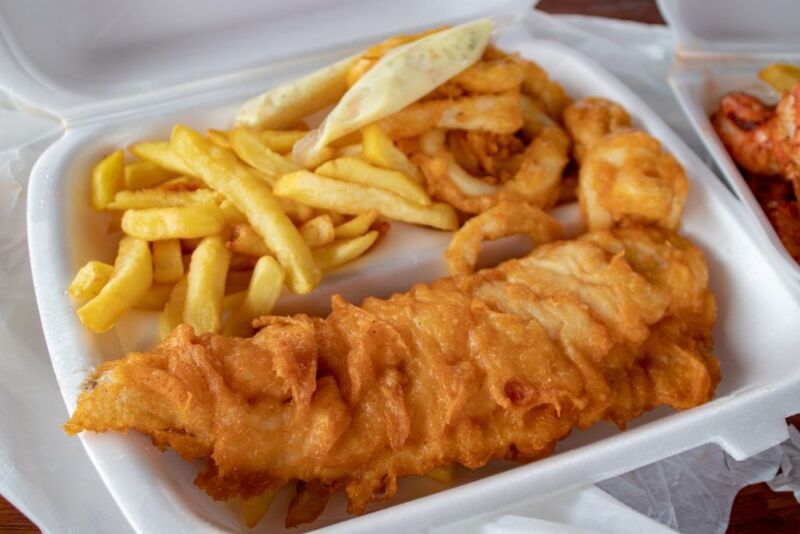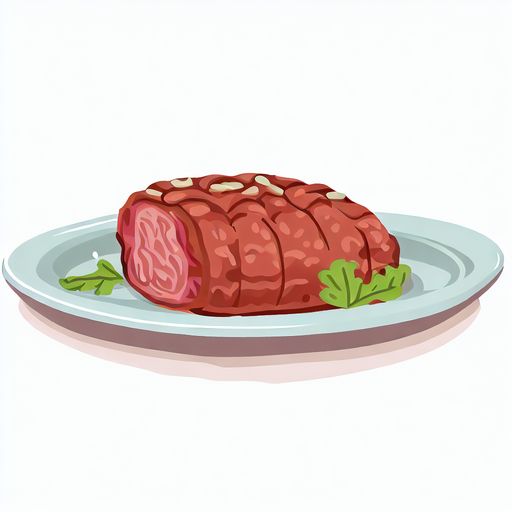How To Reheat Fish And Chips for Maximum Flavor
Fish and chips remain an iconic staple in the United Kingdom, with dedicated “chippers” serving up piping hot meals across the country. The classic pairing of fried fish fillets and chunky fries drizzled in malt vinegar captures the hearts and palates of locals and tourists alike.
Many opt to indulge in fish and chips at restaurants for an authentic experience. However, as more people cook seafood at home, the question arises – can we replicate the magic of freshly fried fish and chips using leftovers?
Proper reheating techniques allow us to enjoy fish and chips again without sacrificing taste or texture. This guide covers various methods to reheat fish and chips to revive the flavors of this classic dish.
Can Fish and Chips be Eaten the Next Day?
In the UK, fish and chips traditionally get served in paper wrappings for immediate consumption. The dish holds a special place in British food culture. Consequently, some orthodox views suggest fish and chips lose appeal when not piping hot and fresh.
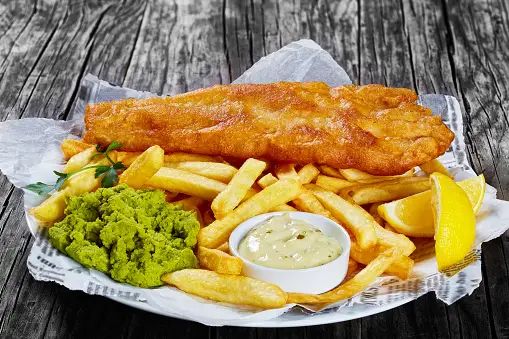
However, heating oil creates free fatty acids that break down over time and cause fish to spoil quicker. So the question isn’t whether you can eat day-old fish and chips, but rather – how long past the initial frying can you extend its shelf life?
General guidance suggests consuming fish and chips within an hour of frying for optimal taste and texture. The window extends to up to 2 days if you refrigerate leftovers in airtight containers. Freezing allows storing fried fish and chips for 2-3 months without compromising quality.
So while the joy of crunchy hot chips straight out of the fryer fades over time, with careful storage and reheating, fish and chips absolutely can be enjoyed again.
How Do You Know if Fish and Chips are Bad?
Fish and chips eventually go bad, no matter how you store them. Look out for these signs to determine if your leftovers are still edible:
- Fish changes color, especially at edges
- Fish flesh feels slimy
- Noticeable fishy odor
- Soft, mushy chips
- Chips look grayish and translucent
- Rancid frying oil smell
Trust your senses – if reheated fish and chips smell or appear unappetizing in any way, don’t risk eating them.
How to Store Leftover Fish and Chips?
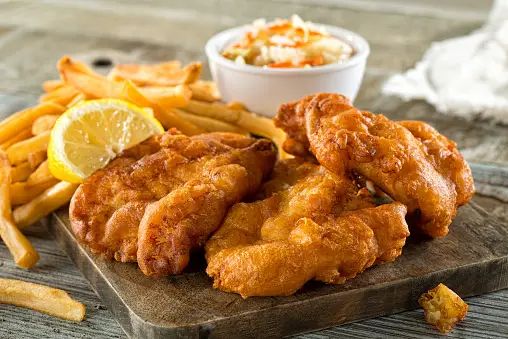
Proper storage preserves the taste and extends the shelf life of leftovers. Here are some tips:
- Let cooked fish and chips cool down before refrigerating in airtight containers. This prevents moisture buildup.
- Blot excess grease from chips with paper towels before storage to avoid sogginess.
- If made with raw meat, consume within 1-2 days. Otherwise, store for up to 4 days in the fridge.
- For longer shelf life, freeze fish and chips immediately. They’ll last 2-3 months frozen.
- Avoid room temperature storage. Refrigerate leftovers within 2 hours of cooking.
Follow above guidelines for storing fried fish and fries to retain textures and flavors when reheating later.
How to Reheat Fish and Chips in an Oven?
Oven reheating brings fish and chips closest to the original fried version. Follow these simple steps:
- Preheat oven to 350°F.
- Line a baking sheet with aluminum foil and lightly grease it.
- Place fish fillets and chips in a single layer on the tray.
- Lightly brush fish and chips with oil or cooking spray (optional).
- Bake for 15 minutes, turning halfway through.
- Check frequently to prevent overcooking. Remove once hot and slightly crispy.
The gentle oven heat revives the flavor of leftovers without overdrying. For added crispiness, finish by broiling fish and chips for 1-2 minutes.
How to Reheat Fish and Chips in a Skillet?
Don’t have an oven? Reheating in a skillet or frying pan gets the job done! Follow these steps:
- Heat a non-stick skillet over medium-high heat.
- Adjust heat to medium for Teflon pans to prevent damage.
- Add fish fillets and fries in batches if needed.
- Use tongs to flip components regularly while reheating.
- Fry for approximately 5-7 minutes, until hot and slightly crispy.
- Avoid overcrowding to ensure even crisping.
Monitor temperature closely when reheating fish and chips on the stovetop. Lower heat settings for non-stick and Teflon cookware prevent release of harmful fumes.
How to Reheat Fish and Chips in a Broiler?
Broilers or grillers use direct overhead high heat for quick crisping. Follow these steps:
- Adjust oven rack to around 6 inches below heating element.
- Place fish fillets on foil-lined baking sheet or broiler pan.
- Broil fish for 2-3 minutes until hot and starting to brown.
- Spread chips on another foil-lined baking sheet.
- Broil fries for 4-5 minutes, turning occasionally for even crisping.
Keep a close eye on foods reheating under the broiler to prevent burning. This method skips the need for added fat or oil.
How to Reheat Fish and Chips in a Microwave?
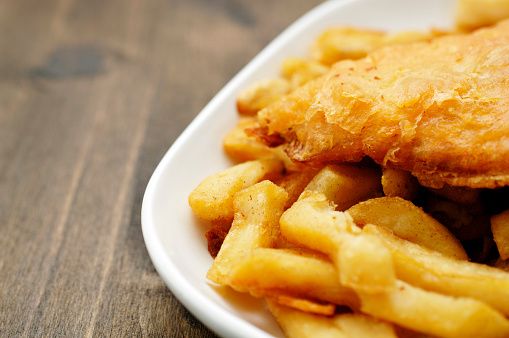
It’s best to avoid microwaving fish and chips. The microwave tends to leave fried foods soggy with a rubbery texture.
If reheating fish and chips in the microwave seems unavoidable, follow these precautions:
- Use low power settings for shorter intervals. High heat toughens fish and makes chips mushy.
- Separate components, arranging fish pieces toward the edge for more direct heat exposure.
- Limit reheating to 1-2 minutes at a time, checking frequently.
- Let microwaved food sit 1-2 minutes before enjoying for improved texture.
Keep microwave reheating as a last resort for fish and chips. For best results, use the oven or broiler to retain the signature crunch of chips.
Conclusion
Fish and chips need not be a one-time treat when dining out. With proper refrigeration or freezing, leftovers can be reheated for fresh-tasting home enjoyment again.
Oven reheating does the best job mimicking the original fried flavor and texture. But other quick and easy methods like skillet, broiler, or microwave reheating let you revive leftovers anytime.
Experiment with different reheating techniques to find what works best for your palate. We’d love to hear your tips and tricks for reheating fish and chips!
